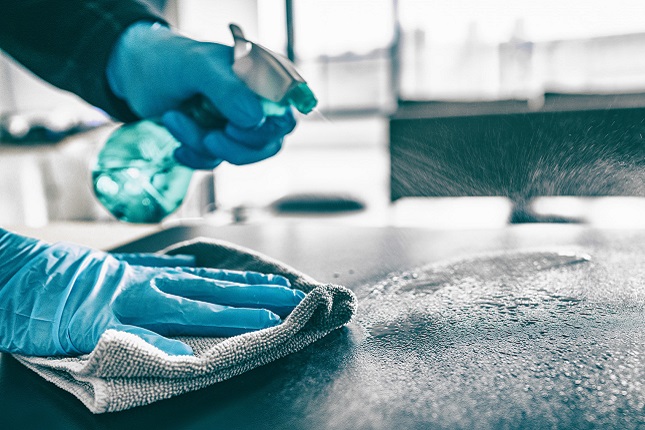SABIC TO LAUNCH AT MD&M WEST 2023 NEW CHEMICALLY RESISTANT, THIN-WALL TRANSPARENT LNP™ CRX COPOLYMER RESINS THAT CAN HELP IMPROVE MEDICAL DEVICE DURABILITY & SUSTAINABILITY
SABIC, a global leader in the chemical industry, will introduce at MD&M West 2023 two new
LNP™ CRX polycarbonate (PC) copolymer resins offering a distinct combination of robust chemical and impact resistance, thin-wall transparency, dimensional stability and processability. In device applications such as clear covers, screens and display lenses, the new materials can overcome key drawbacks of incumbent PC resins and co-polyester resins when exposed to disinfectants or aggressive chemicals. Customers can choose LNP™ ELCRES™ CRX1314TW copolymer or its bio-based equivalent, LNP™ ELCRIN™ CRX1314BTW copolymer, which offers up to a 42 percent reduction in carbon footprint based on life cycle assessment (LCA). Both grades feature limited biocompatibility according to ISO 10993 and coverage under SABIC’s healthcare product policy, which provides stringent management of change processes. Since SABIC’s first LNP ELCRES CRX copolymer resins were introduced at MD&M West 2020, the continued market need for chemically resistant materials has driven the development of these innovative thin-wall transparent materials.
Nithin Raikar, SABIC’s Senior Business Manager for LNP Resins and Compounds, will discuss these new LNP CRX materials at MD&M West 2023. His presentation, “Thin-wall Transparent, Chemically Resistant LNP CRX Copolymer Resins: Addressing Medical Device Durability and Sustainability Trends,” will take place on February 8 at 11:30 am in the Design Alley Theater.
“The rigorous healthcare disinfection protocols established during the COVID pandemic are ongoing and SABIC continues to innovate in the area of chemical resistance,” said Joshua Chiaw, Director, Business Management, LNP & NORYL, Specialties, SABIC. “Our Specialties business is developing new solutions that not only help device manufacturers avoid degradation from aggressive disinfectants, but also address other requirements. Our newest materials extend the LNP CRX portfolio by combining signature chemical resistance with other desirable properties, including sustainability. These thin-wall transparent copolymers, which complement our opaque LNP CRX grades, can help customers take a holistic approach when creating diagnostic devices and wearables that deliver longer service life, lower system costs and reduce environmental impact.”
Distinct Combination of Properties
Like all LNP CRX materials, the new grades feature exceptional resistance to harsh disinfecting chemicals, such as quaternary ammonium compounds, alcohols and peroxides, which can lead to the environmental stress cracking (ESC) of medical device displays and covers. Furthermore, these materials offer transparency equivalent to that of PC resins at thin-wall geometries of 0.8 mm to
1.0 mm, and offer translucency at higher thicknesses. They also deliver high impact resistance across a wide temperature range (down to -40°C), excellent dimensional stability and good processability. Both grades meet the UL94 HB standard for horizontal burning.
The new LNP ELCRES CRX1314TW copolymer and its bio-based version can help customers avoid the trade-offs associated with incumbent transparent materials. Amorphous resins like PC provide excellent clarity and dimensional stability for tight part tolerancing, but typically have insufficient chemical resistance to harsh disinfectants. Semi-crystalline materials, while offering higher inherent chemical resistance exhibit significant shrinkage and part warpage that can negatively affect part tolerances. Due to high moisture absorption, they may be difficult to process and generate excessive scrap resulting from surface defects. Amorphous co-polyesters may be incompatible with harsh disinfectants and may exhibit processing tradeoffs that may lead to potential production inefficiencies.
Improved Sustainability
The new SABIC materials contribute to sustainability goals by helping customers design and manufacture devices with optimized service life. Improved chemical and impact resistance can help to reduce premature part damage and failures. Greater durability results in a more positive life cycle, as fewer devices need to be replaced and, consequently, fewer are disposed to landfills.
Through expanded thin-wall design freedom, the LNP CRX copolymers enable sustainability to be incorporated in devices up front. They can help designers reduce overall part dimensions, consolidate parts and materials, and enhance manufacturing efficiencies with thin-wall molding, which is becoming increasingly important in the design of smaller and lighter-weight applications such as portable and hand-held medical equipment.
Materials based on certified renewable feedstocks could be a great option to help device manufacturers meet their sustainability objectives. Because medical device applications are subject to strict regulatory requirements, any change in material selection triggers product requalification efforts that are costly for manufacturers. The new LNP ELCRIN CRX grade enhances circularity through the incorporation of renewable feedstock derived from non-fossil, bio-based content from waste materials that do not compete with the food chain. The incorporation of renewable feedstock does not compromise product quality and provides identical performance compared to virgin materials. LNP ELCRIN CRX grade can provide a potential drop-in solution to avoid requalification and meet regulatory requirements.
LNP ELCRIN CRX1314BTW resin can offer reductions in carbon footprint of up to 42 percent when compared to the fossil-based version in accordance with ISO 14040/14044 protocols.
SABIC’s Specialties business has received International Sustainability and Carbon Certification Plus (ISCC+) designation at its production facilities in Cobourg, Canada, Benoi, Singapore and Pontirolo, Italy, enabling recognition of its new LNP ELCRIN CRX1314BTW grade, and other mass-balance, certified renewable grades.
Streamlined Manufacturing
To streamline the manufacturing process, LNP ELCRES CRX1314TW and LNP ELCRIN CRX1314BTW grades can offer several advantages, including laser welding capability. To meet the healthcare industry’s growing need for high-precision, vibration-free assembly technology, these new copolymer resins provide near-infrared (IR) transmission optical properties that are required for laser welding. They enable leakproof, low-stress welds without the need for adhesives.
SABIC’s first LNP ELCRES CRX materials that were launched in 2020 are opaque and custom colorable. The introduction of thin-wall transparent LNP CRX copolymers now gives customers a broader selection of high-performance materials for a wide range of applications across multiple industries.
In addition to providing benefits for healthcare devices and wearables, the new LNP CRX products can help protect against the effects of chemicals used in sunscreen, hand creams and insect repellent, which can potentially degrade consumer electronics and industrial applications.
SABIC’s new LNP ELCRES CRX1314TW and LNP ELCRIN CRX1314BTW copolymer resins are globally available.















 粤公网安备 44190002005717号
粤公网安备 44190002005717号